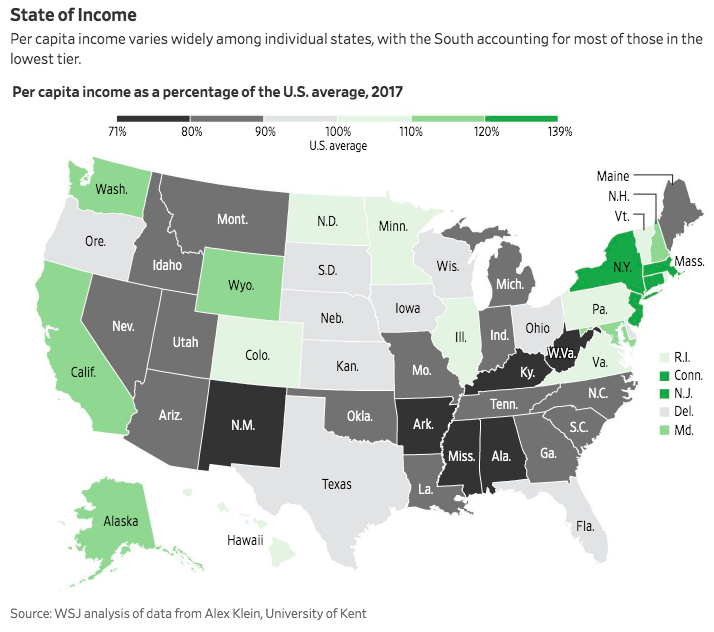Urban vs Rural - 7
Jun. 9th, 2019 01:09 pmThe policies that drove the region’s catch-up—relatively low taxes and low wages that attracted factories and blue-collar jobs—have proven inadequate in an expanding economy where the forces of globalization favor cities with concentrations of capital and educated workers.
...the South, which is more rural than the rest of the country and has fewer big cities. In part because of its legacy of racial segregation the region has, relative to others, underinvested in human capital. Thus the South, the only region to have enjoyed such a dramatic rise in the postwar period, is the only one to experience such a retreat in the past decade.
In the 1940s, per capita income in the states historians and economists generally refer to as the South—Louisiana, Mississippi, Alabama, Georgia, the Carolinas, Virginia, West Virginia, Oklahoma, Arkansas, Tennessee and Kentucky—equaled 66.3% of the national average, according to historical data reconstructed by University of Kent economist Alex Klein and The Wall Street Journal. By 2009, that had climbed to 88.9%. That was the high-water mark. By 2017 it fell back to 85.9%.
https://www.wsj.com/articles/the-souths-economy-is-falling-behind-all-of-a-sudden-the-money-stops-flowing-11560101610
